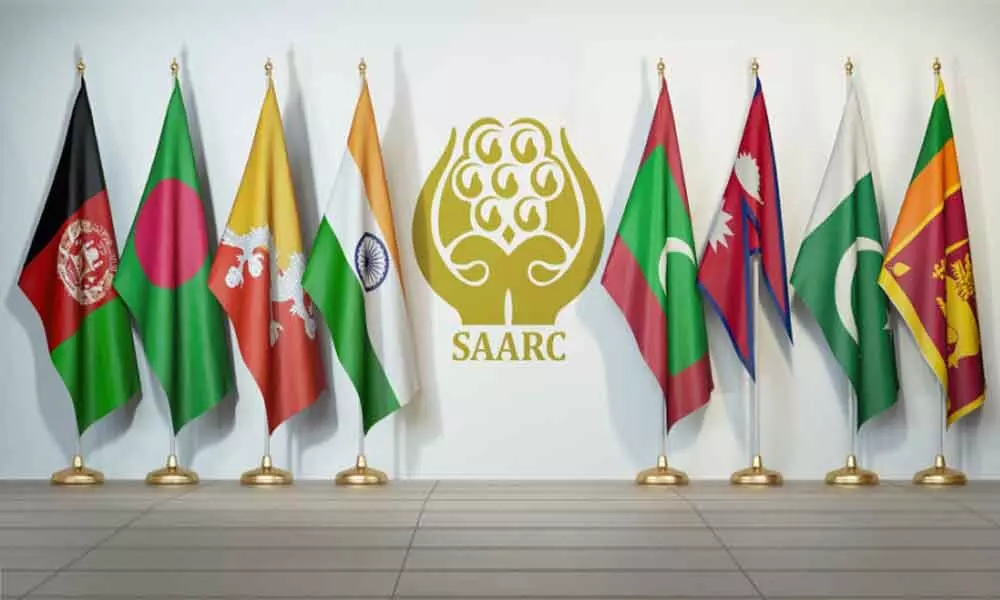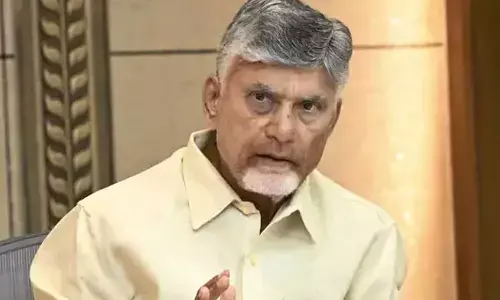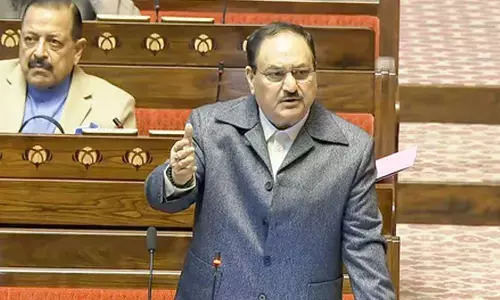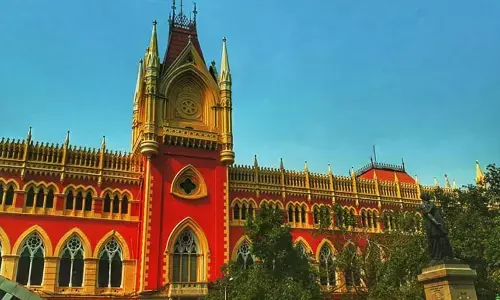Prime time for collective action

As fears of the COVID-19 pandemic gyrating across the world, the convivial gesture of India's Prime Minister Narendra Modi in reaching out to the SAARC nations ushered in a new era of regional co-operation.
As fears of the COVID-19 pandemic gyrating across the world, the convivial gesture of India's Prime Minister Narendra Modi in reaching out to the SAARC nations ushered in a new era of regional co-operation.
Home to about one-fifth of humanity, South-Asia is a melange of diverse cultures. During an hour-and-a-half long video conference with the SAARC leaders, New Delhi had left no stone unturned to regain the confidence of regional players.
India has positioned itself to lead the battle in the region against this deadly outbreak which is extending its tentacles across the globe.
It is axiomatic that the SAARC, which is almost in a debilitated state, thanks to misgivings among the member nations, can act collectively in areas of mutual benefit and the region as a whole, provided that both India and Pakistan should come on board to reach some kind of modus vivendi to re-energise this defunct entity.
The ding-dong between India and Pakistan has led to deflection of path what SAARC is meant to follow and fettered exuberance with which it was formed. The SAARC, a grouping among South Asian nations, lacks vision to deal with the 21st century global challenges.
In spite of having strong cultural and historical ties among the member nations, the region has failed to realise its full potential. The SAARC provides a platform to discuss matters of regional significance and collective interest.
Non-compliance to the basic principles of charter, amongst which non-interference in internal affairs of the member States is of the utmost importance by the parties has proved too costly to build mutual trust and regional prosperity.
Except for on and off meetings and photo ops of leaders, the SAARC gatherings lacks substance. Being one of the least inter-connected regions in the world, South-Asia has been paying a huge price to reap the benefits of free trade regimes and globalisation.
At a time when Beijing's cheque book diplomacy looked upon as a means to debt trap South-Asian nations, all the regional players have natural propensity towards India, a bellwether in the region.
As the world is facing a biggest blow at the very beginning of decade, amid economic slowdown and supply chain disruption, the major economies across the world seemingly redefine the economic ties with China.
In the wake of COVID-19 outbreak, the entire global economic chain has been disrupted and the financial systems of major economies across the world have already been facing pandemic shock. It is clear that in order to deal with aftermath effects of COVID-19, the South-Asian region needs an effective and long term strategy to boost up economies.
Countries like Sri Lanka, the Maldives and Bhutan, whose economies are heavily reliant on tourism and allied sectors have started to see slump owing to travel restrictions, ban on tourist arrivals and flight freezes.
The entire world has been in the doldrums and full of uncertainty, as a result, the economic prospects of the region also looks bleak, demands a concerted action to revive their economies.
South Asia, the most densely populated region in the world, with no dearth of man-power, can reap benefits of demographic dividend to further its growth momentum. Termed as one of the most disintegrated regions in the world, South-Asia's intra-regional trade constitutes merely 5% of region's trade with rest of the world.
It is clear that as long as geo-politics supersedes geo-economics, people of South-Asia would be at the losing end. To realise "Make in India", a flagship programme of the Government of India, it has to involve the regional players, tapping core capabilities, in order to have a competitive advantage in the global scale.
India, with its lucrative market size, can engage more proactively with its immediate neighbours to resolve trade issues and improving connectivity. It would be win-win situation to all the parties in the region, if they forgo their misgivings, pitch for "Make in South-Asia".
Although the initiative to bring the regional leaders to the table through the SAARC virtual meet is timely and laudable in the midst of coronavirus crisis, it is equally important to shed light on prevailing health systems in South Asia. There has been a clear dichotomy in terms of health services in the Indian-subcontinent.
On the one hand, the region, especially India, due to its cost-effective and quality services, attracts considerable number of medical tourists from Asia and the European Union nations and on the other, the people of South-Asia face challenges with respect to accessibility, affordability and availability of health services.
Abysmal state of public health care system, in addition to rural-urban and intra-regional divide, compels the uninsured populace to seek private care incurring out-of-pocket expenditure eventually leaving millions of families in a state of debt and destitution. The time has come to reinvigorate and redefine the public health systems in the region.
In the light of COVID-19 emergency, India took the leadership role in efforts to combat COVID-19 penetration in the region. India, which is at the forefront in the battle against deadly-virus, extended a helping hand by creating the SAARC coronavirus emergency fund with $10 million contribution and has been responding to requests from the neighbourhood countries at the drop of a hat, shedding its leaden-footed approach in dealing with neighbours.
India, involving all the players in the region, has to devise a comprehensive plan of action to deal with the challenges of similar sort. It is up to the regional players to build strong, safe and sustainable South-Asia, one of the most disaster prone regions in the world.
(The writer is Director, Samudrala VK IAS Academy and columnist on international affairs and trade)


















